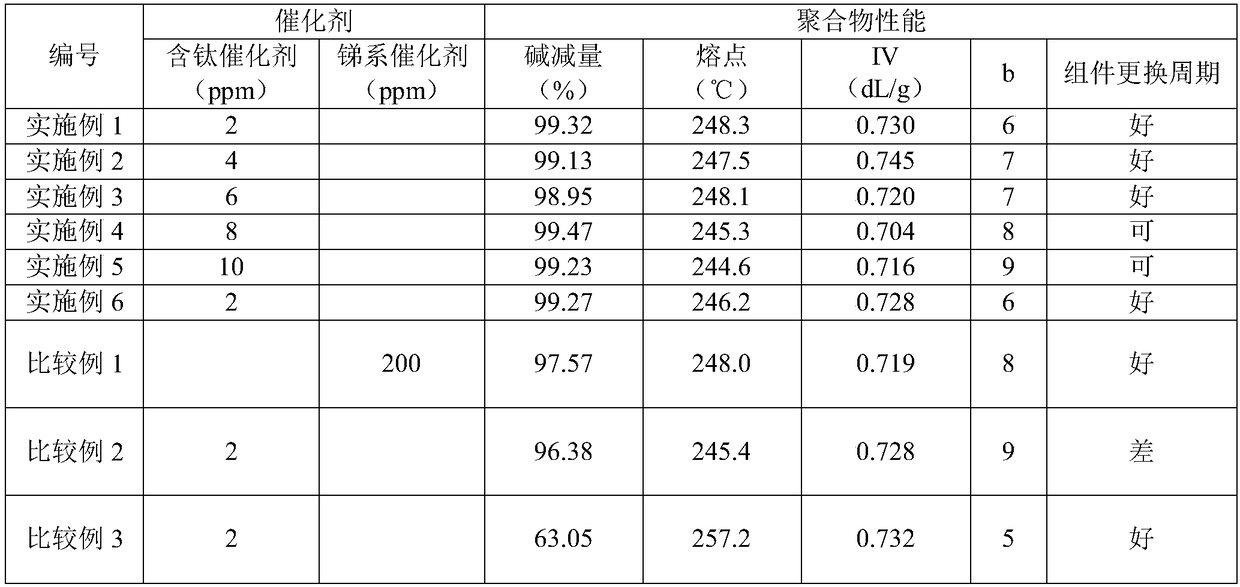Antimony catalyst-free alkali-soluble copolyester continuously polymerizing method
A polymerization method and an alkali-soluble technology, which is applied in the field of continuous polymerization of alkali-soluble copolyesters, can solve the problems of prolonging the service life of the spinneret assembly, pollution, and short service life of the spinneret assembly, so as to reduce self-polymerization and etherification reactions , easy to dissolve, the effect of solving antimony pollution
- Summary
- Abstract
- Description
- Claims
- Application Information
AI Technical Summary
Problems solved by technology
Method used
Image
Examples
Embodiment 1
[0044] Add 1 part of 5-sodium sulfoisophthalate and 5 parts of ethylene glycol into the reaction kettle, heat and stir with a heat medium, control the temperature at 180°C, and remove the generated water in time through a rectification tower. After reacting for 3 hours, prepare Sodium bishydroxyethyl isophthalate-5-sulfonate.
[0045] The process of producing alkali-soluble polyester on the continuous polymerization device of 750kg / hr melt amount: ethylene glycol, purified terephthalic acid and bishydroxyethyl isophthalate-5-sodium sulfonate are pressed 1.1: 1: The molar ratio of 0.025 is added to the slurry mixing tank to prepare slurry at a flow rate of 949.1kg / hr, and sodium acetate / ethylene glycol solution is added at a ratio of 80ppm Na at the same time. Esterification Second Reactor. In an esterification reactor, the temperature is controlled at 250° C., the pressure is at 60 kPa, and the esterification rate is controlled at 92%. In the second esterification reactor, i...
Embodiment 2
[0047] Change the consumption of the titanium-containing catalyst in embodiment 1 to 2ppm, and other conditions are identical with embodiment 1.
Embodiment 3
[0049] Change the consumption of the titanium-containing catalyst in embodiment 1 into 6ppm, and other conditions are identical with embodiment 1.
PUM
| Property | Measurement | Unit |
|---|---|---|
| Intrinsic viscosity | aaaaa | aaaaa |
| Particle size | aaaaa | aaaaa |
Abstract
Description
Claims
Application Information
 Login to View More
Login to View More - R&D
- Intellectual Property
- Life Sciences
- Materials
- Tech Scout
- Unparalleled Data Quality
- Higher Quality Content
- 60% Fewer Hallucinations
Browse by: Latest US Patents, China's latest patents, Technical Efficacy Thesaurus, Application Domain, Technology Topic, Popular Technical Reports.
© 2025 PatSnap. All rights reserved.Legal|Privacy policy|Modern Slavery Act Transparency Statement|Sitemap|About US| Contact US: help@patsnap.com


